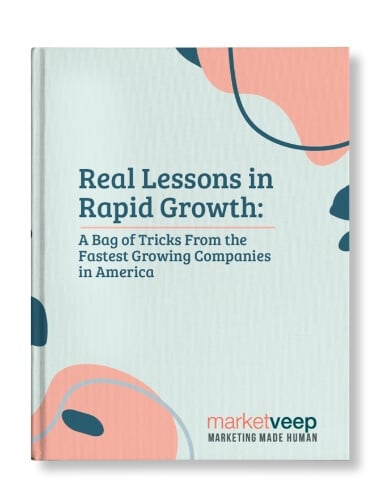Content Optimization: Increase Blog Traffic for Free

 When you purchase through links on our site, we may earn an affiliate commission.
When you purchase through links on our site, we may earn an affiliate commission.
By Jennelle McGrath
You’ve heard it before: In the world of inbound marketing, content is king. But connecting your target audience to the content you generate can be a struggle. These content optimization tips and free resources can be the key to increasing blog traffic and growing your business.
Discomforting as it may be, if your blog posts are underperforming, the first question you should ask yourself is, is it me? Are you setting clear goals for your content and structuring every word around those goals? While you should always strive to keep your content compelling, if you want to learn how to increase blog traffic, then each blog you post should also be constructed with the aim of solving a problem your ideal customer is facing.
Be Strategic With Your Content
It is imperative that you understand not only for whom you’re writing a blog post, but also why you’re writing it. What problem are you trying to solve?
If you’re struggling to come up with quality content ideas optimized for increasing blog traffic, then find out what questions people are asking online that pertain to your industry. Question-and-answer websites like Quora are a great place to start. Once you have a clear understanding of the kinds of issues your target customer is likely to run into, you can design your content marketing strategy accordingly.
The Power of Presentation
Developing thought leadership in your industry is key to increasing blog traffic. You should strive to generate a reputation for your blog as a reliable and authoritative source of information relevant to your target audience.
There’s more to quality content than text alone. What good is a compelling treatise on the intricacies of your industry if no one reads it? First impressions matter, and today consumers are especially adept at tuning out the less substantive among the many voices competing for their attention.
You should be constantly working to establish and maintain trust with your reader. Impeccable spelling and grammar, as well as a strong sense of style and syntax, are necessary components to increasing blog traffic and presenting your solutions in such a way that earns your reader’s trust.
Of course, presentation goes deeper than the words on the page. You should consider the reader’s experience at every turn. Are you writing in the appropriate voice to reach your target customer? Is your content too dense? Too thin? Have you structured your post to allow for a little breathing room? Subheaders and bulleted lists provide necessary whitespace to break up thick sections of text.
Images are especially important for maintaining your reader’s interest. Free image sites like Pexels and Unsplash are solid resources for finding relevant images to pair with your text. Other visual elements such as infographics and video, where appropriate, can help you convey your message efficiently with minimal burden on your reader.



Locate Your Audience Online
Once you’ve gotten a piece of content that provides a clear and effective solution to your target customer’s problem, you’ll need to push it out on the appropriate channels. Find out which websites and social media platforms your target reader spends the most time on. You should maintain a consistent presence across a variety of media, but narrowing down the list to two or three central locations can prevent wasted effort on your part and content fatigue on the part of your reader.
Google Analytics is key to this process. This free tool can help you learn which sites are driving the most referral traffic. Once you’ve located the most effective channels through which to deliver your content, use strategies like A/B testing to find out which types of post perform best at which times. You’ll need to be patient, but this process will save you time and energy in the long-term and improve your ability to increase your blog traffic.
Once you’ve located which social media channels your prospects are consistently using, make sure to push your content from both your company and personal pages. It is important to provide a variety of access points to your blog content to keep your presentation fresh and enticing.
Email is another avenue by which you can reliably reach your target audience. Be sure to include links to your blogs in your email campaigns to drive traffic to your posts. Your goal should be to capitalize on every opportunity to share your blog content, and email is a direct, personalized channel you’ve already opened between your company and your contacts.
Maintain Proper SEO Practices
Always be sure to follow SEO best practices when creating your content. Pushing your content out on social media is a useful strategy, but securing a high rank on search engine results is vital to increasing blog traffic. Your target customer is most likely looking for a solution to their problem on a search engine, and you want them to access your solution as easily as possible, and, frankly, that means catching their attention before someone else does.
- Keywords
- Title
- Meta Description
- Internal Linking
Keywords
Structure your content around certain keywords and phrases that your target customer will use in their search. These keywords should appear in your opening paragraph and throughout your blog post. Free keyword tools like Keywords Everywhere can help you hone in on target phrases for which you can try and rank in search results.
Title
The title is arguably the most important component to a successful blog post. An effective title could mean the difference between a prospect on your blog over a competitor’s. In addition to clearly presenting your post as the solution to your reader’s problem, your title should contain the relevant keywords for which you’re trying to rank. Search engines like Google will truncate titles longer than seventy characters, so be sure to come in under that number if you want to increase blog traffic.
Meta description
This snapshot of the content a reader can expect to find in your post may be the difference between your target audience clicking it, and increasing blog traffic, or scrolling on to your competitor. You should include keywords, but your goal should be to create the most compelling synopsis of your blog possible, as this preview is likely what will entice the reader to click your blog over the next one in the list. Aim for around 150 characters to ensure the description is not cut short by the search engine.
Internal linking
Your goal should be to create a catalogue of useful, repurposable information for your target audience to explore. Keep your previous blogs in mind when creating new content, and link back to posts that contain the same keywords or that will be generally helpful to your reader. This interlinking serves the dual function of providing additional resources for your reader and boosting your credibility to search engines. Be sure to update your archived content regularly to keep it fresh and relevant in the face of changes in your industry.
Generating great blog ideas is only half the battle. Your goal from the outset should be to make sure that content is easily accessible to your target audience. Using these content optimization tips and tools will make increasing blog traffic easier than ever, help you attract the right traffic to your blog, increase engagement with your featured call to action, and convert leads to loyal customers.
Get The Latest From
Market Veep
RELATED ARTICLES

Embracing Digital Marketing Strategies in Industrial Markets
After all, traditional marketing that focuses on in-person sales visits and printed marketing...

Event Marketing Examples for Every Funnel Stage
But exactly what is event marketing, and how can you incorporate it into your overall marketing...

Exploring the Latest Manufacturing Marketing Trends
Manufacturing marketing trends are no exception, as many top companies now rely on digital...

Get Growing!
Download our eBook and get advice from 8 CEOs of Inc. 5000 companies in their own words.

GREAT MARKETING PARTNER
Market Veep is a great firm that handles all of our marketing efforts. This is the second time that I have used the firm. I highly recommend Market Veep!

Cres F.

EXCEPTIONAL EXPERIENCE
Market Veep's Onboarding Experts in Inbound Marketing are an absolute game-changer! From the get-go, their approach was top-notch. Market Veep's team has undoubtedly set the bar high for excellence in inbound marketing. Five stars aren't enough to commend their outstanding service!

Matthew W.

BEST PARTNER EVER!
As a growing business, setting up our first-ever HubSpot account was a crucial step towards enhancing our marketing and customer management strategies. From the moment we contacted MarketVeep, their team demonstrated professionalism, expertise, and a genuine desire to help us succeed. Overall, our experience with MarketVeep was exceptional, and we couldn't be happier with the results. Thanks to their guidance, we are now utilizing HubSpot to its fullest potential, streamlining our marketing efforts, and nurturing leads more effectively.

Jean M.

SET UP FOR SUCCESS!
We had an exceptional experience with Market Veep! Their team is professional, super organized, and friendly, and I truly enjoyed working with them. They executed on time and made the process super easy with their organization and documentation. In addition, they provided additional guidance and answered my many questions as I was new to HubSpot, and provided documentation resources for future use. We're now set up to leverage all that HubSpot marketing has to offer, and we couldn't have done it without Market Veep's expertise.

Bailey G.

5 STARS FOR MARKET VEEP!
We had a fantastic experience with Market Veep! Their expert team seamlessly guided us through implementing HubSpot and provided comprehensive training across Sales, Service, and Marketing Hubs. Their knowledge and support significantly enhanced our workflow and overall efficiency. Highly recommend Market Veep for top-notch HubSpot solutions!

Anneke C.







